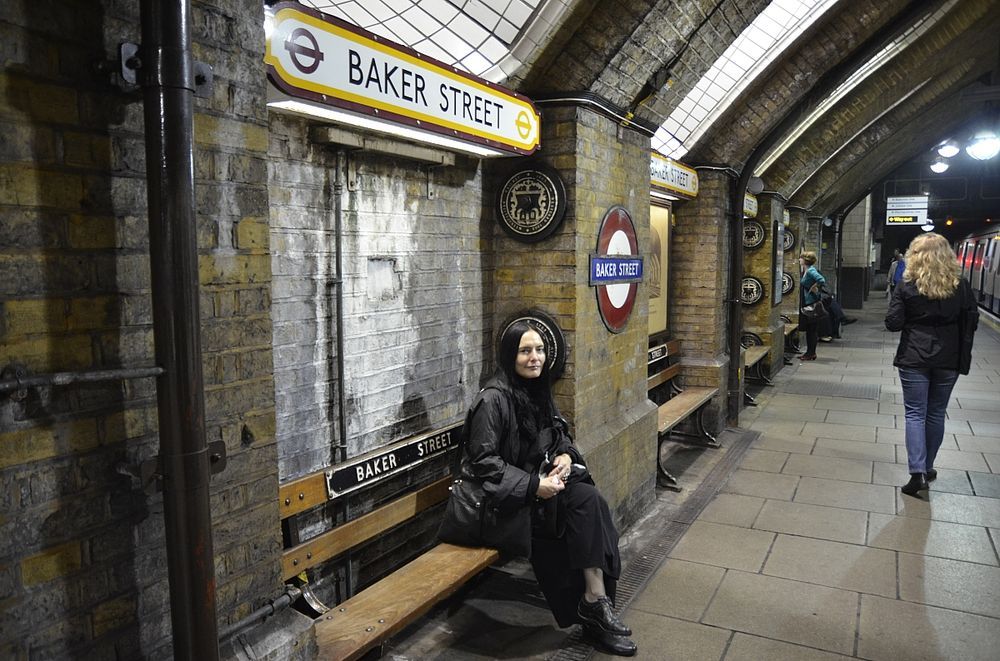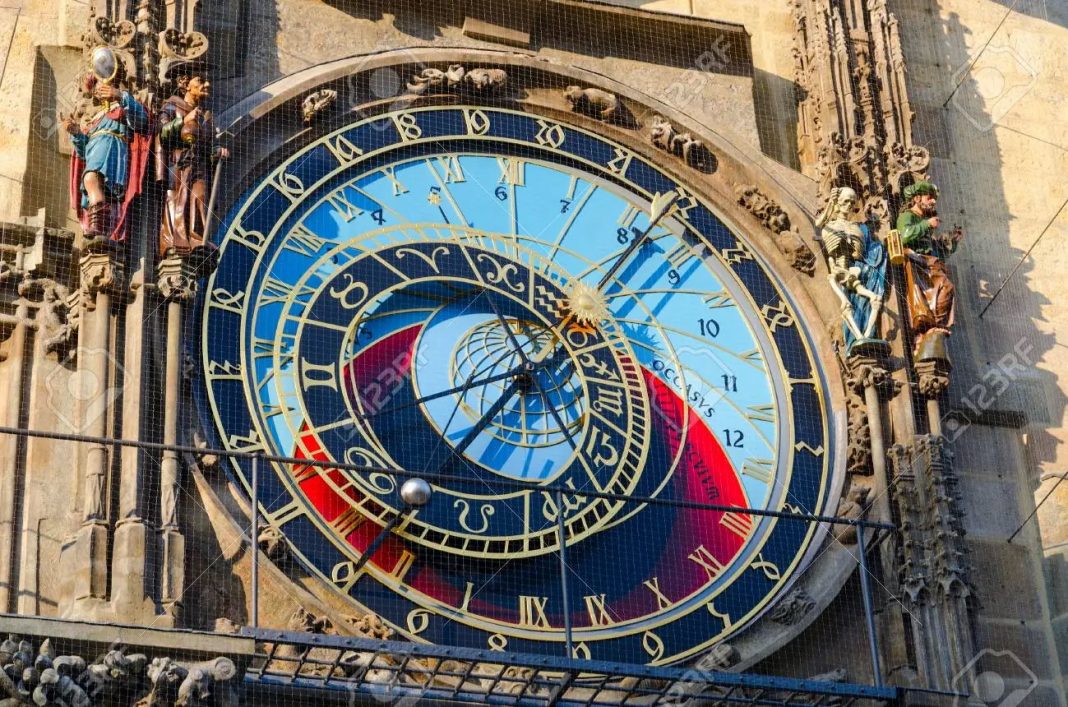Imagine a guy turning up at your office with an idea for putting a huge clock on the outside. It’s going to cost loads of money, it’s going to break down a lot and only 3 people in the next 400 years will know how to fix it. Well the year was 1405, Mikuláš of Kadan was the guy and the city burghers decided to go for it. Now you have to know that over the previous 75 years the Old Town has been spending.
It had bought three buildings, reconstructed two, demolished one and built the clocktower so they were not exactly short of money and this idea came at an opportune time. Little did they know that this would become the oldest operating Astronomical Clock in the world.
Watch the Apostle procession everyday on the hour 9am to 9pm
THE BASICS
The geocentric Astronomical clock dial is at the top. The Calendarium is at the bottom. Often referred to as the Prague Astronomical Clock, in Czech the two combined are known as the Orloj. The clock tells accurate time according to the Roman numerals on the inside of the clock. On the outer ring of the clock are the numbers 1-24 which indicate the remaining daylight hours. The Calendarium has a fixed centre and pointer. It rotates clockwise once per day and points at a different area of the outer part which is divided into 366 sections and each has a name in it. For more info about part, check the Czech Namesday page.
Just like your old Casio right? This is just a basic understanding of the different functions of the Prague Astronomical Clock and I’ve since written a post about How to Tell the Time on the Astronomical Clock to help you get the actual time and how long until dusk. If you look at the spindle carefully you’ll see it’s embedded in a map of Europe and centred on Prague. Hence if you see another Astronomical clock somewhere it may look similar but the times will be different. It’s often easier to understand and interpret the clock if you think less about time and more about cycles. It wasn’t so much a case of what time is it now but more, how long until x. To make it as simple as possible for you, the hand (actual physical hand) will be pointing at the present time based on the Roman numerals.
THE PRAGUE ASTRONOMICAL CLOCK PROCESSION
If you want to see what the procession usually looks like then check the Astronomical Clock Striking 9am video.
On the hour from 9am to 9pm (all year) or 9am to 11pm (summer months) you have the procession on the Prague Astronomical Clock. You’ll notice that both the Clock and the Calendarium have characters on both sides. The ones either side of the Calendarium do not move. On the hour, the characters either side of the clock will start to move when the skeleton begins ringing the small bell. This causes the small windows above the clock to open and you’ll see the following apostles:
Look at the mechanics involved here. Sliding metal doors, the apostles turning on spindles driven by chains with springs to pull them to the front as they pass their respective windows. There’s even an air pressure system which cause the cockerel to perform at the end of the procession. It’s amazing it works at all.
As you look at it from the ground – From the left window:
St. Paul holding a sword and a book.
St. Thomas carrying a spear.
St. Juda Tadeus holding a book in his left hand.
St. Simon follows holding a saw being (patron saint of lumberjacks).
St. Bartholomew appears with a book and is the patron saint of tanners, tailors and shoemakers.
St. Barnabas (Nathael) comes last carrying a papyrus.
From the right window:
St. Peter with a key (patron saint of fishermen, locksmiths and clockmakers).
St. Matthew with an axe (patron saint of builders, carpenters, blacksmiths and butchers).
St. John can be seen castigating a snake being the patron saint of printers and writers.
St. Andrew with a cross.
St. Philip with another cross (patron saint of hatters).
St. Jacob with a tool for working flax (patron saint of linen traders).
After you’ve seen one complete rotation of the apostles then the windows close, the skeleton stops ringing the bell and the cockerel crows. Then the big bell sounds the time in the 24 hour clock. The whole process takes between 60 seconds and two minutes. The skeleton’s movement is the most obvious but all the characters at the top level move in some way. Remember that the procession ends suddenly i.e. skeleton stops ringing, windows close and cockerel crows. My advice is to count the apostles until you see the 5th one passing one of the windows. Then look at the cockerel.
Remember that the Orloj is both parts combined. When the Prague Astronomical Clock was first installed there were no Astrological parts i.e. no small circle on the front of the clock and no Calendarium. These were added later.
After the 2018 Renovation
The Prague Astronomical Clock is now over 600 years old and looked after full-time by a team of Orloj keepers. It’s been deliberately broken, accidentally broken, almost sold for scrap, survived fire and war and the odd stag night. So take a few minutes to enjoy some of Prague’s history.






























